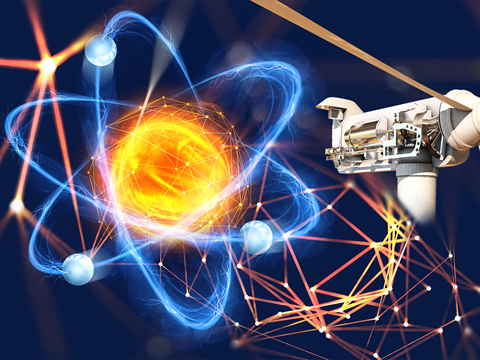Aerospace
Critical minerals, policy, and the energy transition
Critical Minerals and Aerospace Technologies
Critical minerals are the backbone of modern aerospace technologies, enabling the development of lighter, stronger, and more efficient systems essential for both civil and defence aviation. From advanced jet engines and satellite components to cutting-edge avionics and structural materials, aerospace applications rely on a suite of high-performance minerals that deliver strength, heat resistance, electrical conductivity, and precision. Elements such as titanium, beryllium, tungsten, cobalt, and rare earth elements play indispensable roles in propulsion systems, high-temperature alloys, radar systems, and space-grade materials. Their unique properties make them difficult to substitute, heightening their strategic importance in aerospace innovation. As global demand for aerospace technology grows, driven by commercial aviation, space exploration, and national defence. the secure supply of critical minerals becomes increasingly vital. This intersection of mineral security and technological advancement highlights the need for resilient, transparent supply chains to support the next generation of aerospace capabilities.
Lightweight metals
Lightweight metals offer unprecedented opportunities to reduce mass while maintaining exceptional structural integrity and performance. The aerospace industry relies on three primary lightweight metals in modern aircraft design, enabling dramatic reductions in structural weight without compromising structural integrity.
-
Magnesium is critical for lightweight castings in aerospace components. Its low density and excellent casting properties make it ideal for intricate structural parts that require precise engineering and minimal weight.
-
Aluminum is widely used for its lightweight and corrosion-resistant properties in structural parts, it has been a staple in aerospace manufacturing, providing an optimal balance between strength, weight, and cost-effectiveness.
-
Titanium sponge is vital for aerospace-grade alloys due to its exceptional strength-to-weight ratio and corrosion resistance, used extensively in aircraft structures, and offers superior performance in the most demanding aerospace applications.
High strength alloys
In the unforgiving environments of aerospace technology, materials must perform under extraordinary conditions including extreme temperatures, intense pressures, and constant mechanical stress. High-strength alloys represent the cutting edge of materials science, providing critical solutions that make modern aerospace engineering possible.
-
Cobalt is essential for jet engines due to its ability to withstand extreme temperatures. Beyond its structural applications, cobalt plays a crucial role in aerospace electronics, finding important uses in battery technologies that power critical onboard systems.
-
Hafnium adds critical heat resistance to aerospace alloys, particularly in turbine blades. Its unique properties allow components to maintain structural integrity under the most intense thermal conditions, ensuring reliable performance in jet propulsion systems.
-
Tantalum is prized in aerospace alloys and jet engines for its extraordinarily high melting point and superior corrosion resistance and enables the creation of components that can endure the most punishing operational environments.
Semiconductors and optics
Semiconductors and optical materials form the critical foundation of modern aerospace electronics, powering everything from communication systems to navigation and control mechanisms, and represent the technological heart of aerospace innovation.
-
Gallium is crucial for semiconductor chips used in secure communications and avionics. Its unique electronic properties make it indispensable in creating high-performance, reliable electronic components that can withstand the extreme conditions of aerospace environments.
-
Germanium is used in fiber optics and solar cells for aerospace applications. This versatile semiconductor plays a key role in developing advanced optical communication systems and efficient solar power solutions for spacecraft and advanced aircraft.
-
Silicon is foundational to semiconductor manufacturing for advanced electronics. As the backbone of modern electronic systems, silicon enables the creation of complex integrated circuits that control and monitor critical aerospace technologies.
Other aerospace alloys
Structural alloys represent the cutting edge of materials science, where precise elemental additions can transform fundamental properties of metals, enabling technologies that push the boundaries of human engineering.
-
Scandium’s ability to refine grain structure in aluminium alloys enhances strength and weldability, making it vital for lightweight airframes and fuselage components. Even at concentrations as low as 0.5%, scandium improves fatigue resistance in structural alloys, a feature leveraged in military aircraft and spacecraft. However, limited global production, dominated by Russia and China, poses supply risks, prompting research into alternative additives.
-
Copper is used as a corrosion-resistant alloying element in various components. Its exceptional thermal and electrical conductivity, combined with remarkable resistance to environmental degradation, makes copper an invaluable material in creating robust and reliable aerospace systems.
-
Yttrium stabilizes zirconia coatings in jet engine turbines, enabling operation at temperatures exceeding 1,200°C. These thermal barrier coatings protect nickel-based superalloys from degradation, directly improving engine efficiency and lifespan. Yttrium’s role in high-temperature superconductors also supports advanced avionics cooling systems.
-
Tantalum is alloyed with nickel-based superalloys in turbine blades to enhance high-temperature strength, creep resistance, and overall durability under extreme thermal and mechanical stress. Its high melting point and chemical stability improve resistance to oxidation and corrosion, critical for components exposed to hot combustion gases. Tantalum also stabilises the alloy’s microstructure and improves fatigue life, ensuring reliable performance in jet engines, gas turbines, and hypersonic propulsion systems. These properties make it essential for maintaining efficiency and structural integrity in aerospace and energy applications.
-
Tungsten is found in high-density alloys for helicopter blades and cutting tools. Its extraordinary density and extreme heat resistance enable the creation of components that can withstand intense mechanical and thermal stress, critical in the most demanding aerospace applications.
Lightweight batteries
Lightweight batteries are transforming how aircraft and spacecraft manage electrical power, offering unprecedented opportunities for efficiency, range, and sustainability.
-
Lithium is essential for lightweight batteries used in electric aircraft systems. Its exceptional energy density and minimal weight make lithium-based batteries a game-changing technology for electric propulsion, auxiliary power systems, and emerging electric aircraft designs.
Propulsion and power systems
Materials with extraordinary magnetic and optical properties are transforming how aircraft, spacecraft, and defence systems operate, enabling unprecedented levels of performance, control, and communication across propulsion and power systems that rely on specialised materials.
-
Neodymium-iron-boron (NdFeB) magnets dominate aerospace electromechanical systems due to their unmatched magnetic strength. In electric propulsion units, these magnets enable compact, high-torque motors for actuators, landing gear, and thrust vectoring. Samarium-cobalt (SmCo) magnets, while less powerful, withstand temperatures above 300°C, making them essential for jet engine sensors and missile guidance systems.
-
Dysprosium-doped NdFeB magnets retain magnetic properties at elevated temperatures, a requirement for hypersonic vehicle components exposed to intense thermal loads. Terbium’s magnetostrictive properties improve sonar resolution in submarine detection systems, while its integration in Terfenol-D alloys enables precision control of fin actuators in missiles.
-
Erbium’s optical amplification properties are critical for aerospace-grade fiber-optic communication systems. These fibers, embedded in aircraft wings and fuselages, enable real-time strain monitoring and high-bandwidth data transmission for next-gen avionics.
Avionics and sensor technologies
Materials with extraordinary optical, luminescent, and radiation-resistant properties are transforming how we perceive, interact with, and protect advanced aerospace technologies in avionics and sensor technologies.
-
Europium-doped phosphors produce red and blue emissions in cockpit displays and heads-up systems (HUDs). Their stability under radiation ensures readability in space applications, where traditional LCDs degrade.
-
Gadolinium’s high neutron absorption cross-section makes it ideal for shielding avionics from cosmic radiation in satellites and crewed spacecraft. Its compounds are also used in MRI-based non-destructive testing for aircraft maintenance.
-
Lanthanum oxide improves the refractive index of surveillance and targeting optics, reducing chromatic aberration in satellite cameras and night-vision systems. This application is critical for reconnaissance drones and orbital imaging platforms.


Critical sectors using strategic minerals

Meet the Critical Minerals team
Trusted advice from a dedicated team of experts.

Henk de Hoop
Chief Executive Officer

Beresford Clarke
Managing Director: Technical & Research

Jamie Underwood
Principal Consultant

Ismet Soyocak
ESG & Critical Minerals Lead

Rj Coetzee
Senior Market Analyst: Battery Materials and Technologies

How can we help you?
SFA (Oxford) provides bespoke, independent intelligence on the strategic metal markets, specifically tailored to your needs. To find out more about what we can offer you, please contact us.





































